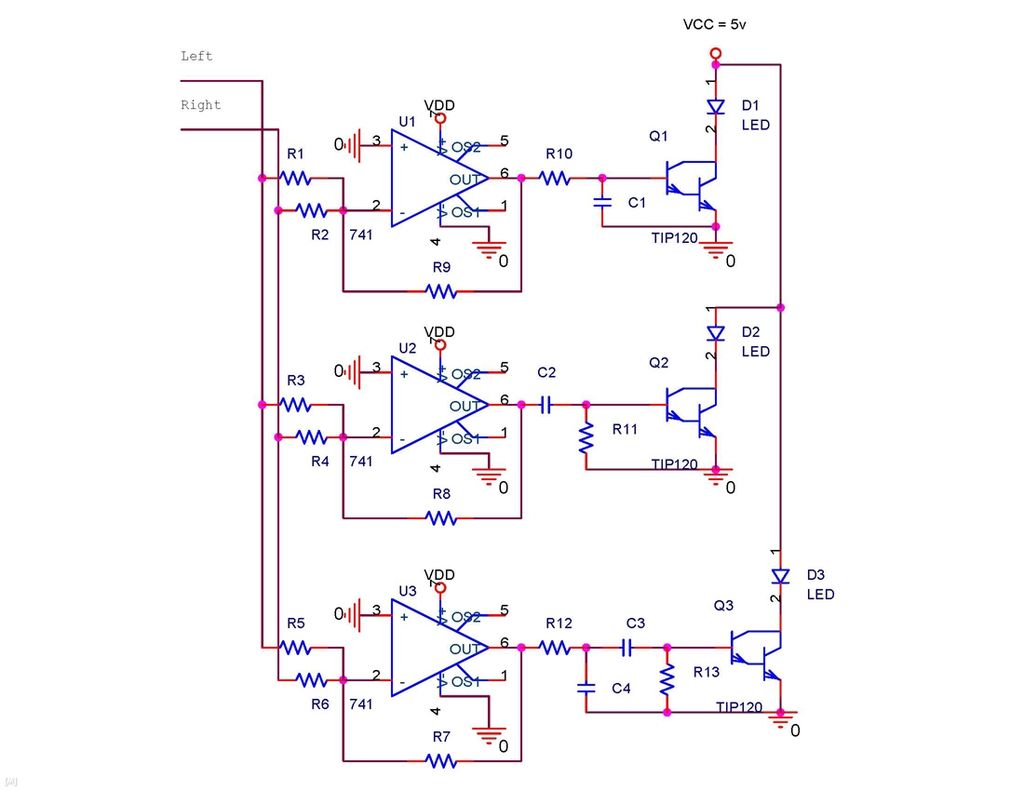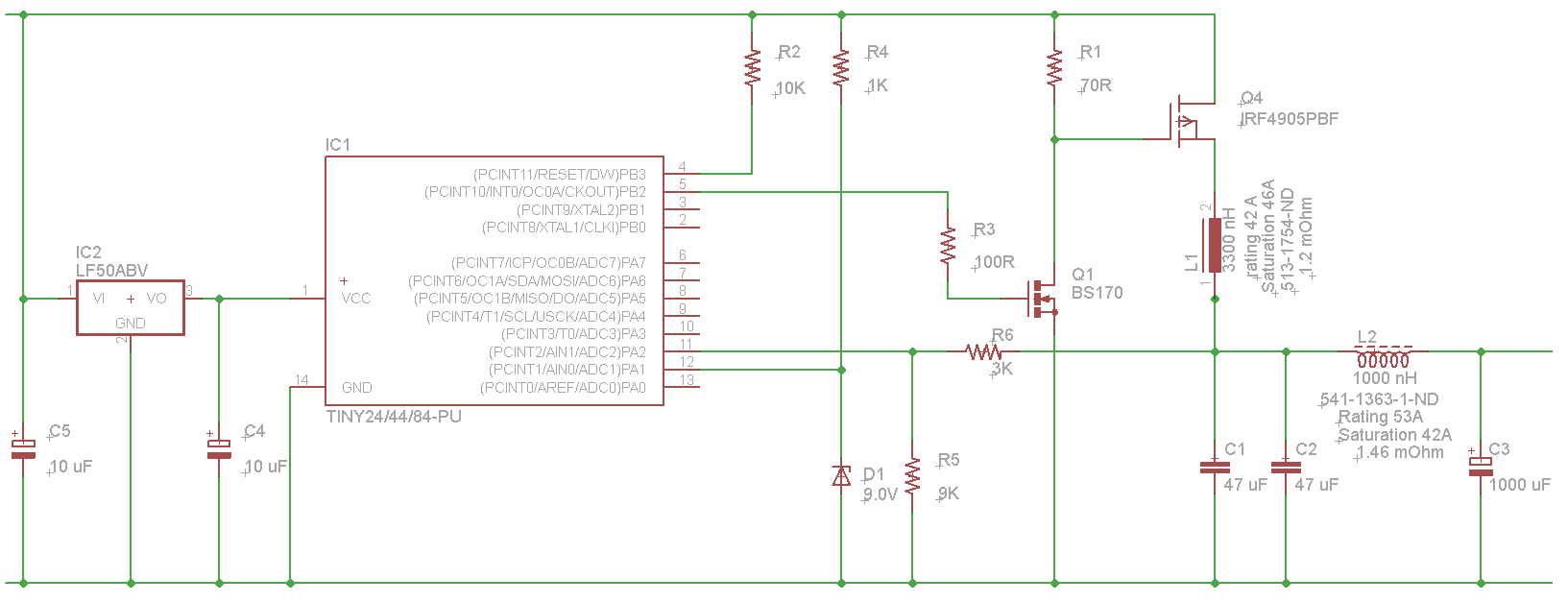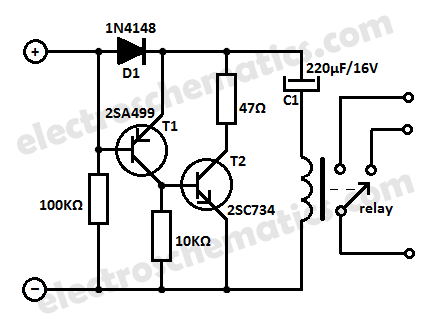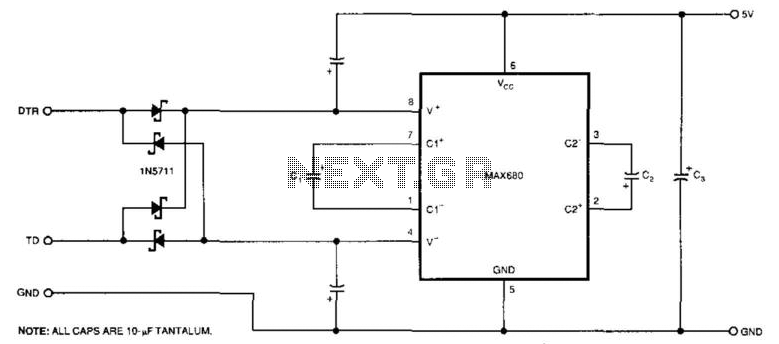
lights led circuits schematics
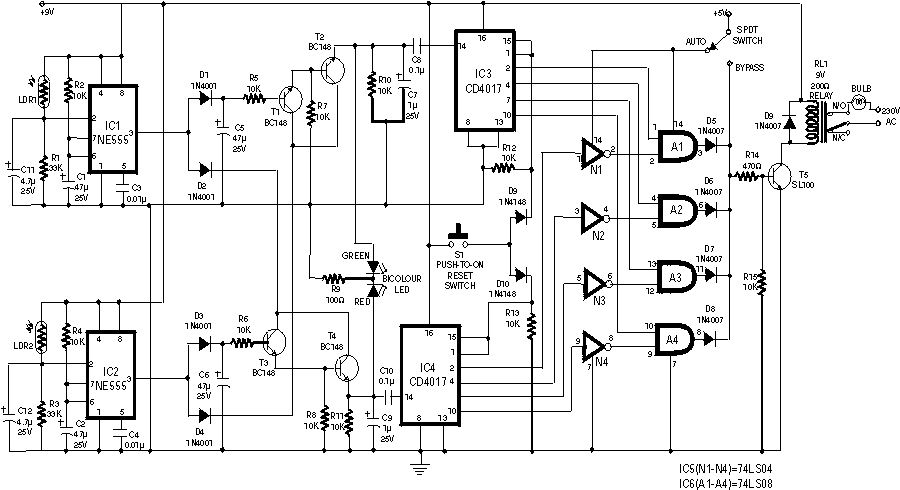
The circuit employs two Light Dependent Resistors (LDRs) arranged in series with a separation of approximately half a meter. This configuration allows each LDR to detect the presence of a person entering or exiting the room. The processed outputs from the two LDR sensors are utilized to control a bicolor LED, which emits green light when a person enters the room and red light when a person exits. These outputs are simultaneously fed into two counters: one counter increases its count by +1, +2, +3, etc., as individuals enter the room, while the other counter decreases its count by -1, -2, -3, etc., as individuals exit. Both counters utilize Johnson decade counter CD4017 integrated circuits. The subsequent stage includes two logic integrated circuits that combine the outputs from the counters to ascertain whether any individuals remain in the room. Due to the use of LDRs, precautions should be taken to shield them from ambient light interference. Alternatively, readily available infrared sensor modules may be employed in place of the LDRs.
The described circuit effectively monitors the flow of individuals in and out of a designated space, utilizing a straightforward yet efficient design. The arrangement of the LDRs allows for accurate detection of movement, as the sequential triggering of each sensor provides a reliable indication of entry or exit. The bicolor LED serves as a visual indicator of the room's occupancy status, enhancing user awareness.
The counters, based on the CD4017 IC, are configured to increment or decrement based on the signals received from the LDRs. This counter configuration ensures that the total number of persons in the room can be tracked accurately, providing real-time feedback on occupancy levels. The logic ICs that follow are tasked with processing the counts from both counters, enabling the system to determine if the room is occupied or vacant.
To mitigate the effects of ambient light on the LDRs, it is advisable to implement shielding or to utilize enclosures that limit light exposure. This can significantly enhance the reliability of the circuit in various lighting conditions. Alternatively, the integration of infrared sensor modules can provide a more robust solution, as they are less susceptible to environmental light variations and can offer improved detection capabilities.
Overall, this circuit design presents a practical solution for monitoring room occupancy, with flexibility in component selection and implementation strategies to suit specific application needs.The circuit uses two LDRs which are placed one after another (separated by a distance of say half a metre) so that they may separately sense a person going into the room or coming out of the room. Outputs of the two LDR sensors, after processing, are used in conjunction with a bicolour LED in such a fashion that when a person gets into the room it
emits green light and when a person goes out of the room it emits red light, and vice versa. These outputs are simultaneously applied to two counters. One of the counters will count as +1, +2, +3 etc when persons are getting into the room and the other will count as -1, -2, -3 etc when persons are getting out of the room. These counters make use of Johnson decade counter CD4017 ICs. The next stage comprises two logic ICs which can combine the outputs of the two counters and determine if there is any person still left in the room or not.
Since in the circuit LDRs have been used, care should be taken to protect them from ambient light. If desired, one may use readily available IR sensor modules to replace the LDRs. 🔗 External reference
The described circuit effectively monitors the flow of individuals in and out of a designated space, utilizing a straightforward yet efficient design. The arrangement of the LDRs allows for accurate detection of movement, as the sequential triggering of each sensor provides a reliable indication of entry or exit. The bicolor LED serves as a visual indicator of the room's occupancy status, enhancing user awareness.
The counters, based on the CD4017 IC, are configured to increment or decrement based on the signals received from the LDRs. This counter configuration ensures that the total number of persons in the room can be tracked accurately, providing real-time feedback on occupancy levels. The logic ICs that follow are tasked with processing the counts from both counters, enabling the system to determine if the room is occupied or vacant.
To mitigate the effects of ambient light on the LDRs, it is advisable to implement shielding or to utilize enclosures that limit light exposure. This can significantly enhance the reliability of the circuit in various lighting conditions. Alternatively, the integration of infrared sensor modules can provide a more robust solution, as they are less susceptible to environmental light variations and can offer improved detection capabilities.
Overall, this circuit design presents a practical solution for monitoring room occupancy, with flexibility in component selection and implementation strategies to suit specific application needs.The circuit uses two LDRs which are placed one after another (separated by a distance of say half a metre) so that they may separately sense a person going into the room or coming out of the room. Outputs of the two LDR sensors, after processing, are used in conjunction with a bicolour LED in such a fashion that when a person gets into the room it
emits green light and when a person goes out of the room it emits red light, and vice versa. These outputs are simultaneously applied to two counters. One of the counters will count as +1, +2, +3 etc when persons are getting into the room and the other will count as -1, -2, -3 etc when persons are getting out of the room. These counters make use of Johnson decade counter CD4017 ICs. The next stage comprises two logic ICs which can combine the outputs of the two counters and determine if there is any person still left in the room or not.
Since in the circuit LDRs have been used, care should be taken to protect them from ambient light. If desired, one may use readily available IR sensor modules to replace the LDRs. 🔗 External reference
